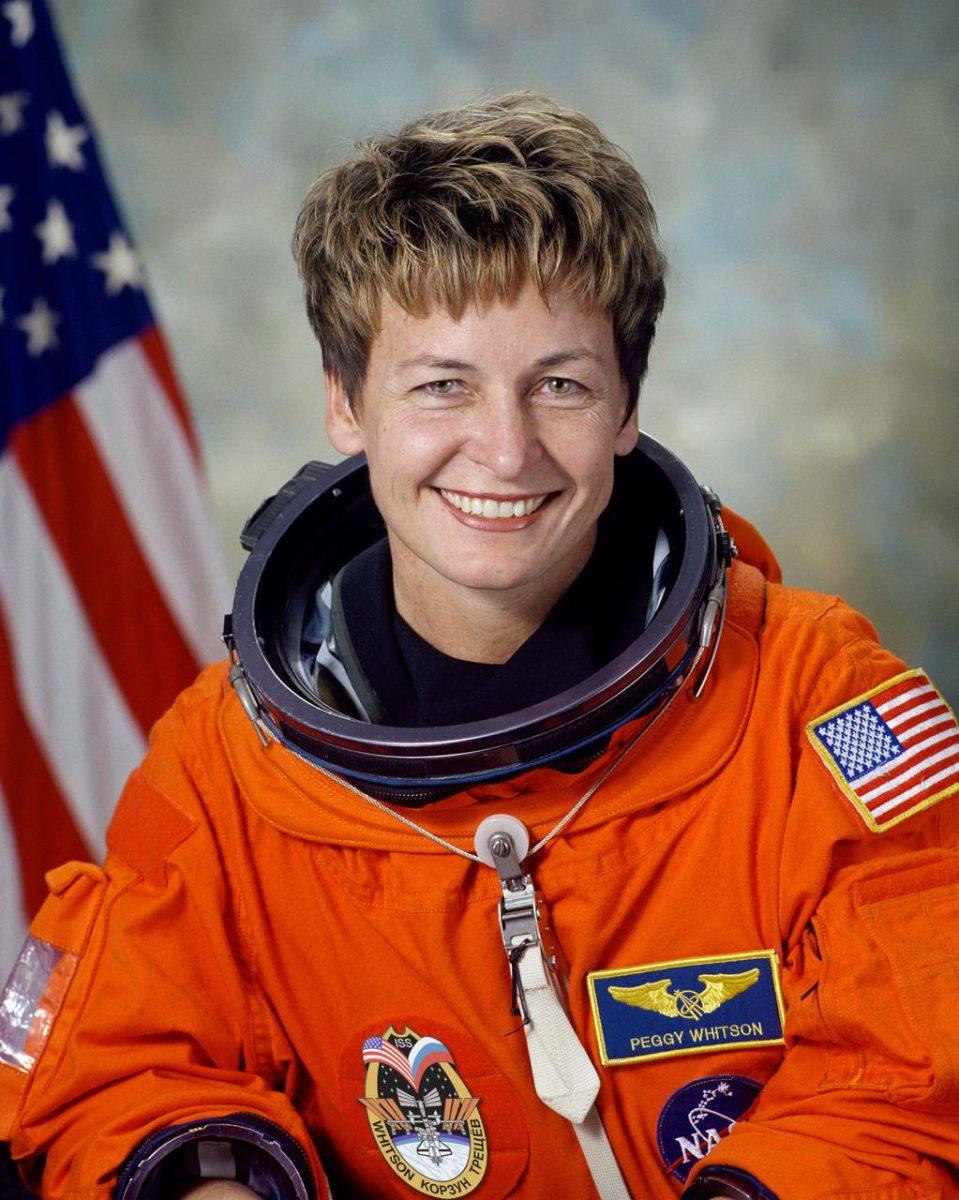On Sept. 22, former NASA astronaut Dr. Peggy Whitson returned to her home state of Iowa to give a lecture at the Drake University Municipal Observatory. Whitson traveled a distance of 250 miles — vertically.
Whitson is an astronaut – an astronaut who has spent the most time in space out of any other American astronaut or female astronaut in the world.
As a child, Whitson watched the 1969 moon landing, which made her consider space travel as a career.
“I thought, ‘What a cool job. Yeah, I’d like to do that someday,’ but being an Iowa farm kid, I didn’t know that would ever be an option. But it was always a dream of mine,” Whitson said.
The year she graduated from high school was the year NASA selected its first female astronauts, and among them was a biochemist.
“By then, I knew I was interested in biology and chemistry. So I thought, ‘Well, maybe I can do this,’” Whitson said.
NASA rejected Whitson four times before she was accepted. According to Whitson, she kept trying because it “felt right.”
She feels that, in retrospect, those years were some of the most important of her life. Whitson built up valuable skills that in her eyes resulted in her becoming the first female commander of the International Space Station and first female chief of the astronaut office.
During the rejection period, Whitson worked with Russia to negotiate a joint science program about measurement in space.
Once accepted into NASA, Whitson began cadet training. It included what astronauts consider basics — robotics, space walking and learning about the shuttle support systems. After working the ground show, which all astronauts do, she got her first flight assignment, which required two more years of training.
“Every minute was worth it,” Whitson said of the training.
One thing that stood out to her was the change in gravity. A person on Earth rarely thinks about gravitational pull and how everything stays on the ground, but in space, she had to think about it when things floated.
“It’s that whole mindset of adapting to some place that is so foreign to everything that you’ve ever done before that is really exciting to me,” Whitson said. “I really enjoy living up there long enough to have it be my home.”
Whitson’s schedule includes a lot of travel between Earth and space to the point where she considers it her second home. Each day in space includes cardiovascular training to prevent muscular atrophy. The workout machine recreates gravity on Earth, so the astronauts utilize the same muscles they would use with gravity. After they return to Earth, astronauts complete 45 days of repositioning.
“I don’t find [space] scary because I trained for so many years,” Whitson said. “I got ready for all the different things that might happen, and that training made all the difference.”
Whitson said space life was only hard because of the jobs they had to do, such as fixing the toilet. One of her favorite parts of space travel was the view of Earth.
“It is so incredibly beautiful. It gives you such a sense of perspective on who we are and how special this place is that we live,” Whitson said.
The event began with a meet-and-greet session with Whitson at 6:30 p.m. before the actual fireside chat at 8 p.m. Whitson answered questions from the audience.
Three Drake first-years — Lila Khan-Gumm, Michelle Makawa and Michelle Easton — appreciated the event’s educational aspect and hope to come to public nights in the future. All considered it inspiring.
Maison Bleam, a Drake graduate and president of the board of directors for Capital City Pride, helped facilitate the event. Through his connections in Congress, he contacted NASA, who got him in touch with Whitson.
The event is the last one he will be hosting as president of the board.
“I’ve always loved the Drake Observatory,” Bleam said. “I think it’s a jewel of Des Moines. Lots of people haven’t discovered it. So hopefully it [the event] invites people who will come back and utilize this unique opportunity here that we have in our community.”








